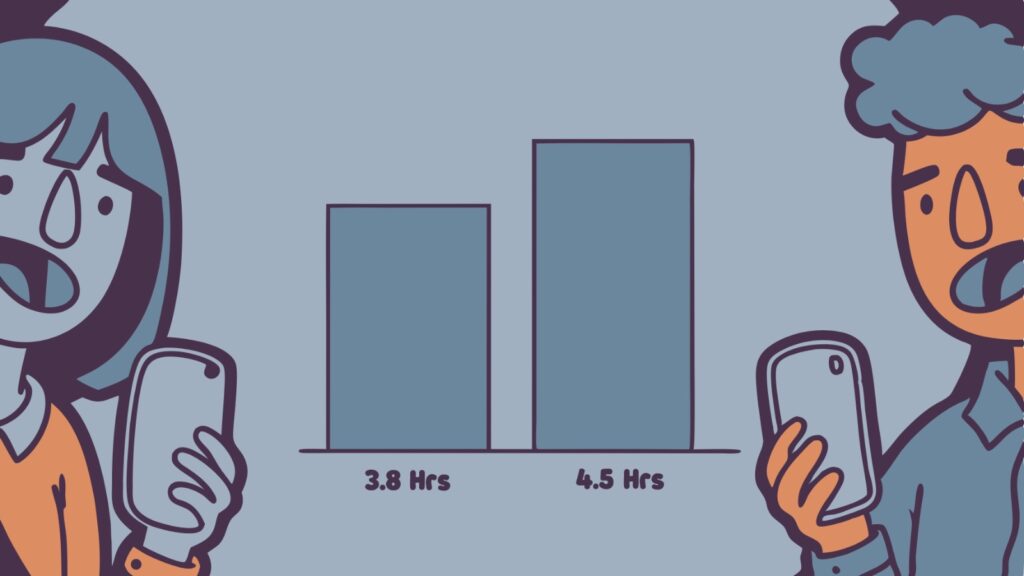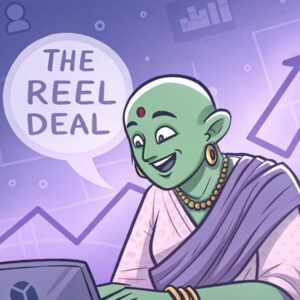
Marketing targeting Millennials vs Gen Z: Why One Size Doesn’t Fit All
Apr 29, 2025
90s kids hate to admit they’re not kids anymore—they’ve grown up. But what they hate even more is that Gen Z has also grown up, perhaps even faster than millennials. Now they are even considered as a serious consumer base with $360 billion disposable income, according to Bloomberg.
While millennials are still processing the idea of adulting, Gen Z is already walking into the boss’s office, looking them straight in the eye and demanding “aura cleansing” leave.
Millennials are stuck in their white t-shirt and blue jeans era, wondering why Harry Potter glasses are no longer in style, while Gen Z is picking up “rizz” from BTS and slurping ramen like it’s a lifestyle.
So what do brands do?
First, it was all about clever campaigns—billboards, print ads, and catchy TV jingles. Then, boom—people’s attention spans shrank to 3 seconds, and trends started changing every time someone refreshed their Instagram feed.
Now, in this era of digital marketing everything is social, everything is vocal, and everything needs to reflect authenticity—otherwise, you risk being canceled.
As marketers, we either bring a new practice to the table—or we flip the table.In this blog, we explore how marketing strategies are flipping the table and shifting between millennials and Gen Z, drawing insights from consumer behavior, technological fluency, economic upbringing, and more.
Millennials vs Gen Z in a Nutshell
Millennials (born 1981–1995) :
- Grew up during an economic boom and entered adulthood during the Great Recession
- Tech-savvy but remember life before smartphones
- Value convenience and seamless user experiences
- Tend to be optimistic, collaborative, and loyal to value-driven brands
Gen Z (born 1996–2012) :
- Grew up during economic uncertainty (post-2008 recession)
- Born into the digital age with no recollection of a pre-internet world.
- Pragmatic, financially cautious, and entrepreneurial
- Value individuality, authenticity, and independence
With Bloomberg projecting that by 2030, Gen Z and Millennials will make up 48% of the consumer base, it’s crucial to understand the core traits of both.
Let’s dive in :

1. Outlook Towards Technology and Money :
Millennials are tech-adapted; Gen Z is tech-native. While millennials appreciate convenience in online experiences, Gen Z seeks practicality and purpose which they get mostly from social media marketing.
Stat: 55% of millennials according to a survey by Business Insider say that convenience is the top online shopping benefit, while 51% of Gen Z prioritize price comparisons.
Example: Flipkart’s discount-driven app features cater to Gen Z’s thrift-focused mindset. Apple, on the other hand, appeals to millennials with its seamless product ecosystem and smart tools like Apple Pay.

2. Where They Shop Online :
Gen Z is mobile-first, often making purchases directly from social media or mobile apps. millennials still rely on mobile and online marketing but expect a complete digital ecosystem.
Stat: Forbes reports that Gen Z is two times more likely than millennials to make purchases using their mobile devices.
Example: SHEIN’s app and TikTok hauls are Gen Z magnets with their real-time trends and fast checkouts. Meanwhile, Forever 21’s website redesign focuses on a smoother omnichannel experience that appeals more to millennials.

3. Their Preferred Marketing Channels :
Millennials love Facebook, Instagram, and YouTube.
Gen Z prefers TikTok, Snapchat, and micro-content.
Stat: Hubspot unveils that Gen Z spends over 4.5 hours a day on social media and millennials, about 3.8.
Example: Spotify uses Gen Z-driven TikTok trends and memes to promote new artists and playlists. Meanwhile, Nike creates inspirational mini-documentaries and YouTube series that tap into millennial nostalgia and motivation.

4. Buying Frequency :
Millennials are more frequent online shoppers, whereas Gen Z approaches online shopping with greater selectivity and purpose.
Stat: 74% of millennials shop online more than once a month; only 49% of Gen Z does the same according to Pew Research.
Example: Zomato’s flash discounts and loyalty rewards appeal to Gen Z’s selective spending habits. In contrast, Netflix’s bundled plans and binge-worthy user interface encourage frequent subscriptions from millennial users.
5. Brand Loyalty and Values :
Both generations care about ethics—but Gen Z holds brands to higher standards.
Stat: WPR’s consumer culture report says 71% of millennials buy from brands that align with their values; Gen Z is even more vocal and action-oriented.
Example: Target’s Gen Z-focused collaborations with inclusive brands like Tabitha Brown’s vegan collection resonate deeply. On the other hand, brands like Calvin Klein continue to win millennial loyalty through consistent value-aligned campaigns and timeless branding.
6. Perception Towards Ads and Sponsored Content :
Both groups are skeptical of ads—but Gen Z is nearly ad-immune.
Stat: Only 32% of Gen Z trust social media ads, compared to 36% of millennials, according to Forbes.
Example: Zomato’s clever and self-referential push notifications align perfectly with Gen Z’s sense of humor. Meanwhile, Apple’s aspirational storytelling still resonates with millennials.

7. Preferred Content Type :
Both love video with a growing emphasis on personalisation—but Gen Z demands authenticity, transparency, and bite-sized content, whereas millennials might gravitate toward slightly lengthy, podcast-style videos.
Example: Nicobar’s behind-the-scenes content and real customer hauls cater to Gen Z’s appetite for raw, relatable material. Meanwhile, Durex planned a podcast that was a massive hit—its long-format, taboo-breaking concept appealed to millennials’ appreciation for substance and education.

8. Sustainability as a Dealbreaker :
Sustainability is a bonus for millennials; for Gen Z, it’s non-negotiable. For Gen Z, sustainability is not just a marketing theme—it’s the cost of entry.
Stat: Nearly 73% of Gen Z shoppers are open to spending extra on eco-friendly products, slightly outpacing the 68% of millennials who feel the same. However, Gen Z is more likely to verify sustainability claims and call out brands for greenwashing.
Example: Gen Z calls out fast fashion brands like H&M for lack of transparency and environmental harm—even while shopping there for affordability. However, they actively support platforms like Spotify’s “Greener Listen” initiatives, which discuss carbon offsets and artist sustainability practices. millennials, on the other hand, resonate more with consistent but less radical efforts, like Allbirds’ carbon footprint labeling or Reebok’s use of recycled materials.
Marketing plans may differ for both, but where do these two generations intersect?
They converge at a shared need—to be heard and to feel seen. Both of them want to come out of the box in their own ways. That is why brands that have a consistent voice and celebrate inclusivity never face the problem of losing people’s mindshare or becoming outdated. A prime example could be brands that promoted fairness creams for women blatantly, promoting sexism subtly, lost their position and appeal in the market. Some of those brands have even had to change their messaging to stay relevant.
Marketing curated for millennials vs Gen Z isn’t about picking sides—it’s about understanding the nuances. Tailor your strategies with empathy, agility, and authenticity, and you’ll earn the trust (and business) of two of the most influential generations yet.
Want help designing campaigns that actually work for both groups? Shoot us a mail at info@monkeywrench.in
Next Story

The Reel Deal: How Reels and Stories Are Impacting Brand Awareness
May 7, 2025
90s kids hate to admit they’re not kids anymore—they’ve grown up. But what they hate even more is that Gen Z has also grown up, perhaps even faster than millennials.…
Read More





